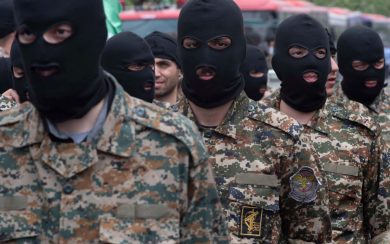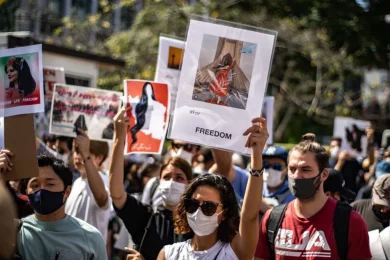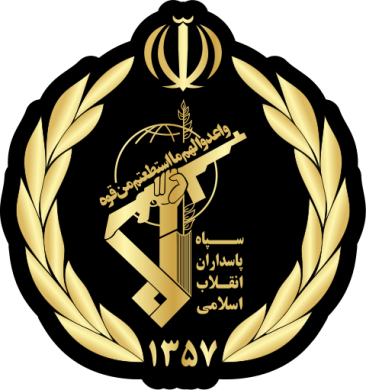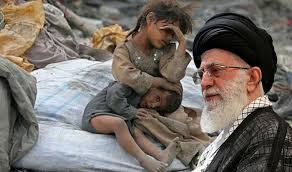The Islamic Revolutionary Guard Corps (IRGC), a powerful branch of Iran’s military, plays a central role in shaping the country’s foreign policy—especially through its extraterritorial unit, the Quds Force. The IRGC has extended its influence beyond Iran’s borders by funding, arming, and commanding proxy militias across the Middle East. This strategy allows Iran to project power, counter regional rivals, and expand its ideological and geopolitical goals—often at the cost of regional stability and humanitarian security.
1. What Is the IRGC and the Quds Force?
• Origins: Established post-1979 to protect the Islamic Republic.
• Expansion: Transformed into a vast military, economic, and ideological entity.
• Quds Force: The arm responsible for extraterritorial operations, including training and supporting proxies.
2. Proxy Warfare as a Strategic Tool
• Definition: The use of aligned or created groups to wage war on behalf of a nation-state.
• Benefits to IRGC:
• Plausible deniability
• Asymmetric warfare against more powerful foes
• Regional influence without direct engagement
3. Case Studies of IRGC Proxy Influence
Lebanon – Hezbollah
• Founded with IRGC assistance in the 1980s
• Functions as Iran’s most powerful proxy
• Armed, trained, and funded by the IRGC
• Has significant political power and a formidable militia
• Role in Syria’s civil war alongside Assad
Syria – Propping up Bashar al-Assad
• IRGC deployed thousands of advisors, troops, and militias
• Coordinated with Hezbollah and other Shia militias
• Helped Assad regain strategic territory
• Civilian cost: hundreds of thousands of deaths and mass displacement
Iraq – Shia Militias (PMF)
• Many factions trained and directed by IRGC
• Used to pressure U.S. presence post-2003
• Some groups accused of sectarian violence and targeting activists
• Politically entrenched in Baghdad
Yemen – Houthi Rebels
• Supported logistically and militarily by the IRGC
• Involved in a brutal war with Saudi-backed forces
• Houthi missile/drone capabilities tied to IRGC tech
• Created one of the world’s worst humanitarian crises
Gaza – Palestinian Islamic Jihad and Hamas
• Financial and military backing to anti-Israel groups
• Destabilization of Israeli-Palestinian peace efforts
• Rocket attacks traceable to IRGC support networks
4. Goals of the IRGC’s Proxy Strategy
• Countering U.S. and Israeli influence
• Challenging Sunni rivals (Saudi Arabia, UAE)
• Exporting Iran’s revolutionary ideology
• Creating a “Shia Crescent” of influence
5. Regional and Global Impact
• Fueling endless wars and displacements
• Undermining fragile states (Iraq, Syria, Lebanon, Yemen)
• Destabilizing energy markets
• Worsening humanitarian crises
• Increased sectarian divides
6. International Responses and Sanctions
• The U.S. has designated the IRGC a Foreign Terrorist Organization (FTO).
• Sanctions have targeted key individuals and entities.
• Calls for EU and other governments to follow suit.
• Challenges in curbing IRGC influence due to its decentralized proxy networks.
7. Can Proxy Warfare Be Contained?
• Diplomatic coordination needed across nations
• Support for state sovereignty in affected countries
• Targeted sanctions and designations
• Public exposure of IRGC operations
• Support to civil society groups resisting IRGC influence
Conclusion
The IRGC’s proxy wars are not isolated regional skirmishes—they are part of a broader strategy of state-sponsored destabilization. By enabling armed groups in Lebanon, Syria, Iraq, Yemen, and Gaza, the IRGC has extended Iran’s reach but left a trail of destruction, insecurity, and instability.To counter this threat, global coordination and action are necessary—not only for peace in the Middle East but for broader international security.
Join Our Newsletter!
Stay informed with the latest updates, news, and ways to take action in the fight for justice and global security. Sign up now to get updates delivered straight to your inbox!





